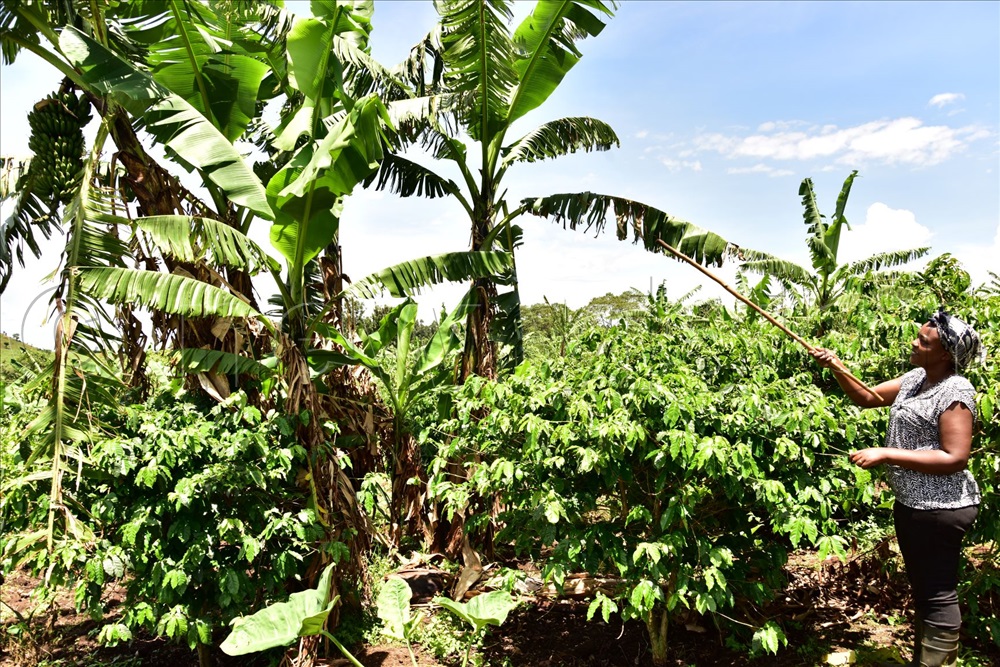By Umar Nsubuga
Coffee-Banana Intercropping (CBI) is practiced by many farmers in the country.
Phoebe Kagambe, the last year’s best farmer says Coffee-Banana Intercropping is a good idea and works as a climate-smart agricultural practice.
“This practice increases income, improves resilience to climatic impacts, and sequesters higher amounts of carbon as opposed to monocropping systems. The practice also has positive effects on household nutrition,” she explains.
Coffee like arabica exists in banana plantations, however, a farmer has to thin the banana population to provide sufficient space for the coffee trees. She explains that the bananas must be planted 4 metres between rows and 5 metres within rows.
She says that coffee should be planted 3 metres between rows and 1.5 metres within rows.
“As a commercial farmer, you are advised to use the correct spacing and plant densities to manage resource competition and improve the cumulative yield of banana and coffee crops,” she explains.

Gideon Zakke, an agronomist says the soil has to be tested before banana cultivation. It has to be established that the soil has deep, rich loamy and salty clay-loam soil with pH between 6.7 which is preferred for the establishment of the banana cultivation. The soil should have good drainages, adequate fertility and moisture.
According to Zakke, the benefits of Coffee-Banana Intercropping are determined by the ability to manage competition for nutrients, water and light between coffee and banana.
He says it’s important to choose banana varieties that are tall enough to exceed the coffee canopy, it’s also important to avoid excessive light competition for bananas. For the coffee, short/dwarf varieties match best under the banana canopy.
Kagambe says when picking coffee, do it with hands or manually and only target the ripe cherries.
She says this method of harvesting is very labour-intensive but has a great advantage. The farmer will harvest the highest quality beans.





